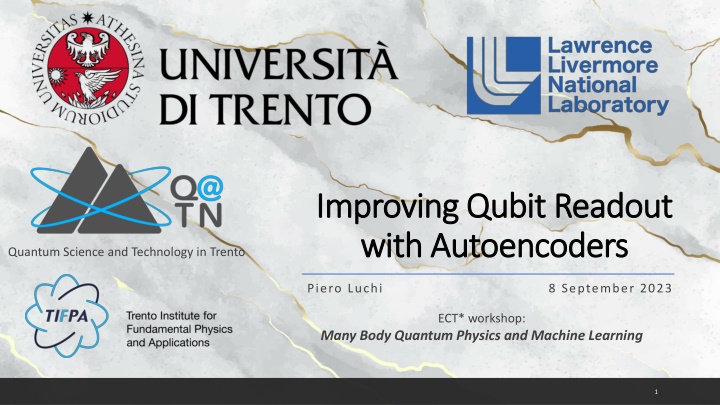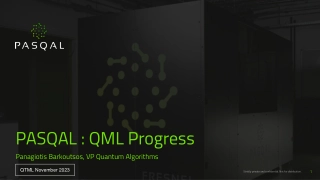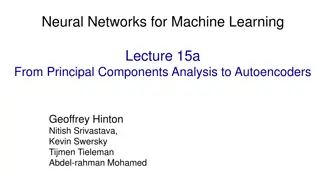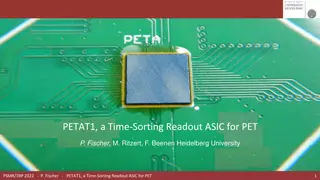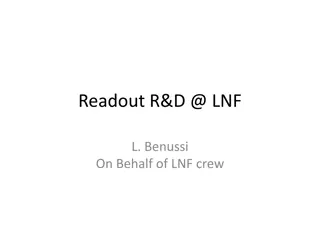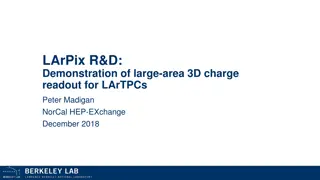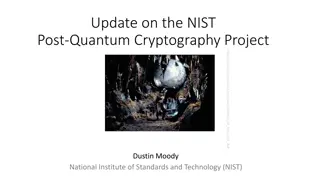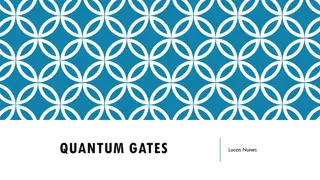Improving Qubit Readout with Autoencoders in Quantum Science Workshop
Dispersive qubit readout, standard models, and the use of autoencoders for improving qubit readout in quantum science are discussed in the workshop led by Piero Luchi. The workshop covers topics such as qubit-cavity systems, dispersive regime equations, and the classification of qubit states through various methods like Gaussian Mixture Models and Neural Networks with Autoencoder-type Pre-training.
Download Presentation

Please find below an Image/Link to download the presentation.
The content on the website is provided AS IS for your information and personal use only. It may not be sold, licensed, or shared on other websites without obtaining consent from the author.If you encounter any issues during the download, it is possible that the publisher has removed the file from their server.
You are allowed to download the files provided on this website for personal or commercial use, subject to the condition that they are used lawfully. All files are the property of their respective owners.
The content on the website is provided AS IS for your information and personal use only. It may not be sold, licensed, or shared on other websites without obtaining consent from the author.
E N D
Presentation Transcript
Improving Qubit Readout Improving Qubit Readout with Autoencoders with Autoencoders Quantum Science and Technology in Trento Piero Luchi 8 September 2023 ECT* workshop: Many Body Quantum Physics and Machine Learning 1
Outline 1. Dispersive qubit readout for superconducting qubits 2. Standard readout models 3. Improving qubit readout with autoencoders 2
Qubit Cavity system Qubit - readout cavity system described by Jaynes-Cumming model: 3
Dispersive Regime Dispersive Readout approach Write the equation in the dispersive regime Dispersive approximation 4
Dispersive Qubit Readout Dispersive shift of the resonator frequency based on the state of the qubit Measurement: Indirectly measuring the qubit state by measuring the resonator frequency shift. 5
Dispersive Qubit Readout Input signal signal ? ? Q Full Demodulation Output signal I 6
Results of Readout According to the qubit state, the point will fall in different part of the I-Q plane. Labelled data: Prepared in state 0 (or 1) and immediately measured. 7
Qubit Readout: Classification How to assign the correct label to each point? Labelled data Unlabelled data ? 8
Qubit Readout: Classification How to assign the correct label to each point? Dataset: Prepare many times each state and measure it immediately Methods : 1. Gaussian Mixture models 2. Neural Networks 3. Neural Network with Autoencoder-type Pre-training 9
Readout Classification: 1. Gaussian Mixture Model (GMM) GMM labelled data Real data Optimize parameters of a superposition of Gaussians Problems: Incorrect classification of many points Not good for long or short measurements Sharp edge 10
Qubit Readout: Demodulation Input signal Sliced Demodulation Turn to a finer-grained signal signal ? ? Full Demodulation Q Output signal I 11
Readout Classification: 2. Feed-Forward Neural Network (FFNN) Try to use all information available Lienhard, Benjamin, et al. "Deep-Neural-Network Discrimination of Multiplexed Superconducting-Qubit States." Physical Review Applied 17.1 (2022): 014024. 12
Readout Classification: Feed-Forward Neural Network (FFNN) FFNN labelled data Labelled (real) data Problems: Lower performance for long measurements gradual transition 13
Readout Classification: 3. Autoencoder-type Pre-trainingNeural Network (PreTraNN) An autoencoder an artificial neural network that learn a compressed representation of input data by encoding it into a lower-dimensional space and then decoding it back into its original form. Unsupervised approach encoder decoder Input Input It minimizes the reconstruction error. Feature extraction, dimensionality reduction Pre-training of feed-forward neural network Encoded/synthetic representation 14 14
Readout Classification: 3. Autoencoder-type Pre-trainingNeural Network (PreTraNN) We train the autoencoder on readout data We obtain a low dimensional representation h of readout signals are noisy, difficult to discriminate. h should retain only the important features of the readout signals Encoded representation Inner dimension should be optimized. 15
Qubit Readout: 3. Autoencoder-type Pre-trainingNeural Network Train the new neural network on the encoded representation h of the readout signals, rather than on the readout signal itself. This should improve the classification accuracy. Neural network LP et al. Phys. Rev. Applied 20, 014045 (2023) 16 16
Qubit Readout: 3. Autoencoder-type Pre-trainingNeural Network Putting it all together... Encoder Neural network LP et al. Phys. Rev. Applied 20, 014045 (2023) 17 17
Qubit Readout: Summary Gaussian Mixture Neural Networks PreTraNN 18
Classification accuracy: Measurement duration Wide range of measurement times. Autoencoder method (PreTraNN) has a better classification accuracy. 19
Classification accuracy: Distributions PreTraNN GMM exact 74,4 Neural network-based methods produce more realistic distributions. Readout 8000 ns 20 20
Conclusions 1. Dispersive readout in superconducting qubits 2. Common techniques to classify readout data 3. Autoecoder-based model to improve the classification accuracy 21
